Explore Leh Royal Palace An Enchanting Tale Of Himalayas In 2025
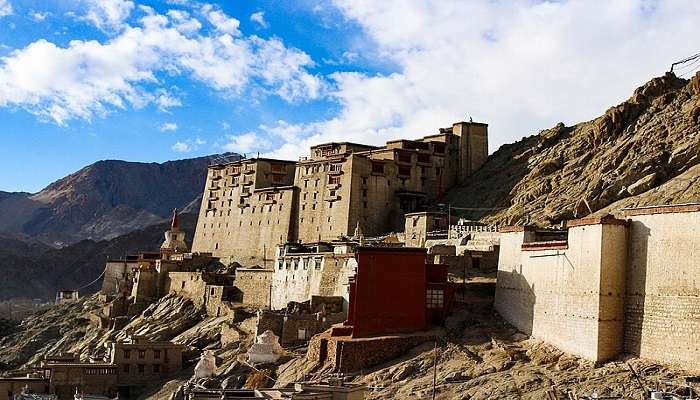
Nestled in the grand Himalayas is the heritage and lineage of the Namgyal Dynasty of Leh, Leh Royal Palace standing atop the high ground and beneath the grandeur of majestic Himalayas.
The construction of this tarnished beauty started in 1553 by Tsewang Namgyal, the founder of the Namgyal Dynasty and finished under the reign of Sengge Namgyal, the lion king of the Namgyal Dynasty in the 1600s. This hub and home of Buddhist culture, though in ruins after the invasion of the Kashmiri Dongri Dynasty, breathes Buddhist culture and its antiquity from every nook and corner of the palace. This 9-storey building once stood as the tallest structure in its prime time, with the top floor serving as the accommodation for the royal family with the views of the majestic Zanskar ranges and Stok Kangri and lower floors as stables and store rooms.
History Of Leh Royal Palace
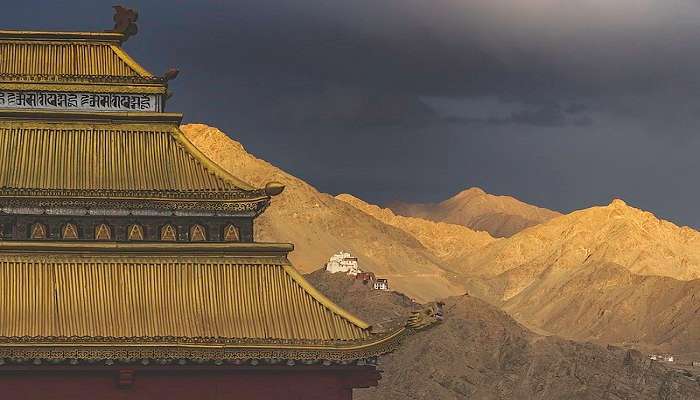
The Leh Royal Palace, although with its tarnished wall, stands as the reservoir of Tibetan Culture with plenty of Buddhist relics, paintings, jewellery and artefacts. The structure, with its small compartments, intricately carved entrances, and expansive rooms and corridors, resembles the Potala Palace of Lhasa. However, the glory of the architectural marvel with cold rooms in summers and warmth during winters was not long-lived as Leh Royal Palace was invaded by the Kashmiri Dongra forces and the royal family of the Namgyal Dynasty was forced to move to the Stok Palace in mid 19th Century.
The grandeur with which this Buddhist cultural heritage stood was destroyed during that time. Though the walls are tarnished, the charm still persists, and the Architectural Survey of India ensures the magnificent Palace remains persists in its natural glory. Adjacent to this architectural wonder stands the testament of the courage of this Namgyal Dynasty, the Victory Tower, built in honour of the Ladakhi soldiers who laid their lives in the war against the Balti Kashmiri in the 16th century.
Also Read: Things To Do In Ladakh
Galdan Namchot Festival Of Ladakh

Though Leh Royal Palace stands in its untainted glory amidst the grandeur of the Himalayan ranges, its allure increases a lot more during the local festival of Galdan Namchot. During this festival, the palace is lit up with vibrant lights, and the people of Leh gather for a five-day celebration. The Galdan Namchot festival is celebrated in memory of Je Tsongkhapa, whose actions and teachings led to the formation of the Gelug School of Tibetan Buddhism.
Marked with lavish celebrations, the Galdan Namchot festival is celebrated in the twelfth month of the Lunar Calendar, marking the beginning of the Ladakhi New Year. During this time of the year, Ladakh and Leh Palace brim with cultural vibrancy, with all the monasteries lit up and butter lamps coming to the surface in all of Ladakh. This is a time of cultural ecstasy, where every Ladakhi expresses their joy and happiness by gifting Khattaks or traditional scarves and brimming their house with local delicacies.
Leh Dosmochey Festival
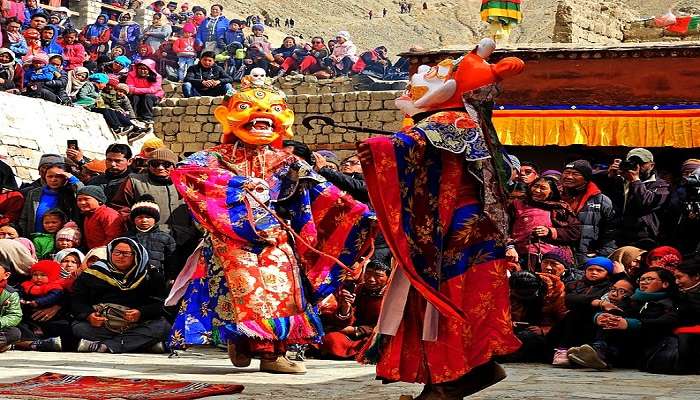
Leh Dosmochey Festival, celebrated just beneath the historic Leh Royal Palace, holds great value for the people of Leh as it indicates warmer days. A few steps below the premises of Leh Royal Palace is an old temple that serves as the celebration ground for this festival, where the monks perform soul-wrenching chams or sacred dances. This time of the year is particular for every person of Ladakhi origin as people dressed in elaborate dresses visit the temples to seek the blessings of their holy deity.
The festivals follow elaborate rituals, where dough idols are burned or isolated in rooms to eliminate evil spirits. The monks also offer crosses made of threads. Leh Bazaar, a few kilometres from the Leh palace, also witnesses the enthusiasm of the festivals, as the bazaar is jammed with stalls of games like tombola and lotteries.
Related Post: Places To Visit In Leh Ladakh
Museum Of Leh Royal Palace
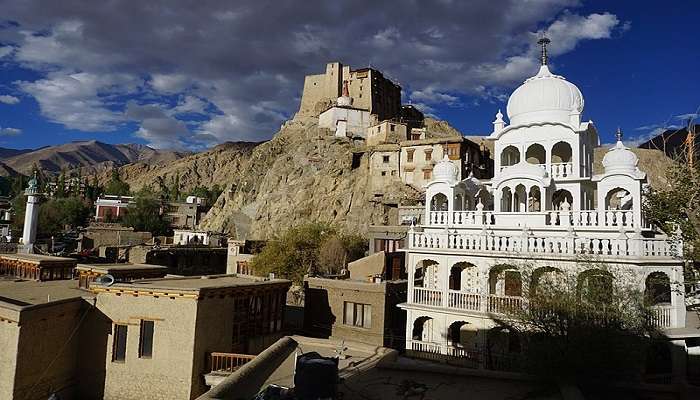
Every part of Leh Royal Palace holds a tale of Tibetan culture, heritage, and strong belief in the teachings of Buddha. With all the corridors, rooms, and tarnished halls open for exhibition, Leh Royal Palace, with a rich collection of jewellery, ceremonial dresses, and crowns, tells an enchanting tale of a kingdom that once prospered beneath the grandeur of the Himalayas.
The exquisitely designed thangka, or Tibetan paintings, still retain the vibrant colours of crushed and powdered stones. However, the most noted features of the palace lie on the bases where the Namgyal Stupa, built by Sengge Namgyal, points to the cultural vibrance of the Ladakhis who once lived here. The beautifully muraled Chandazhik Gompa and intricately designed Chamba Lhakhang hold visitors with them, and yet another tale is that these structures whisper into the wandering tourists.
Charges – Rs 15 per person
Timings – 7:00 am to 4:00 pm
Delicacies To Try
A visit to Leh cannot be considered complete unless you indulge yourself in the flavour of local cuisine. Here is our list of some must-try dishes on your holiday tour to Leh.
1. Thukpa
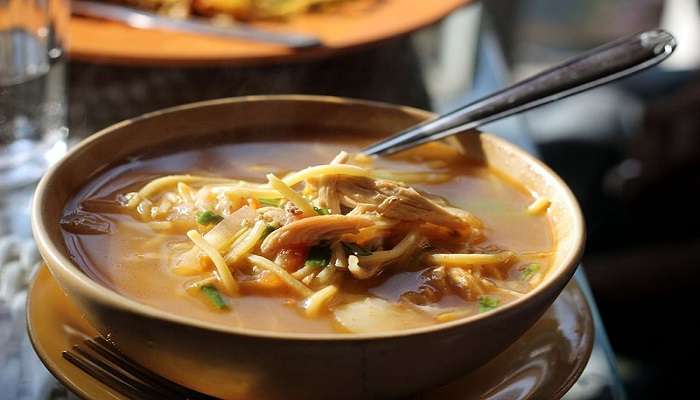
Thukpa is a must in the breathtaking Himalayas’ cold and dry climate, a perfect culmination of rejuvenating soup, fresh vegetables, tender meat, and slurpy noodles. Thukpa is the most savoured dish in high-altitude Leh, and many shops serve you the richness of this mouth-watering local dish. The dish will complement your taste buds and be a perfect food for your stomach, with just the ideal spice blend. A bowl of the authentic Thukpa amidst the majestic ranges of the Grand Himalayas is an experience that remains with you for a while.
Origin: East Tibet
Taste: Spicy
Goes with: Locally baked bread
Related Post: Ladakh Travel Tips
2. Gur Gur Cha
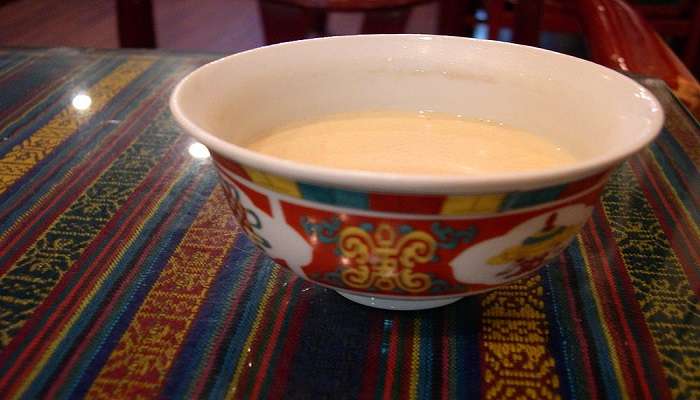
The cold climate of the glorious ranges of Leh is just the perfect place to savour a rich beverage topped with Yak butter and salt—Gur Gur Cha, also known as Butter Tea. A staple of every Ladakhi, this is the most savoured beverage of Ladakh, with the richness of butter and salt. However, this beverage adds to its goodness with various health benefits, such as good digestion, energy, and relief from altitude sickness.
Origin: Tibet
Taste: Salty and buttery
Made by: Churning tea leaves along with butter and salt
Places To Visit Near Leh Royal Palace
Once you are done visiting Leh Royal Palace, take some time to visit the nearby attractions of the palace. Here are some of them that we have shortlisted for you –
1. Shanti Stupa
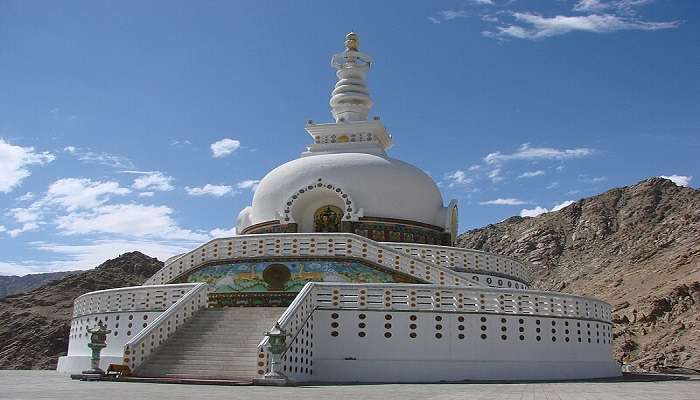
The purity of structures indicates the purity residing within the hearts of the people who constructed them. One such structure that defines chastity is the Shanti Stupa, which stands unique in its construction as it was built by both Japanese and Ladakhi Buddhists; along with the sentiments of the people of Ladakh, the Shanti Stupa, built at the top of Chanspa in Leh, harbours relics of Buddha at its base, enshrined by the Dalai Lama. Built to promote world peace, the Shanti Stupa depicts various events in the legendary life of Buddha.
Charges – None
Timings – 5:00 am to 9:00 pm
Related Post: Ladakh In Winter
2. Khardung La Pass
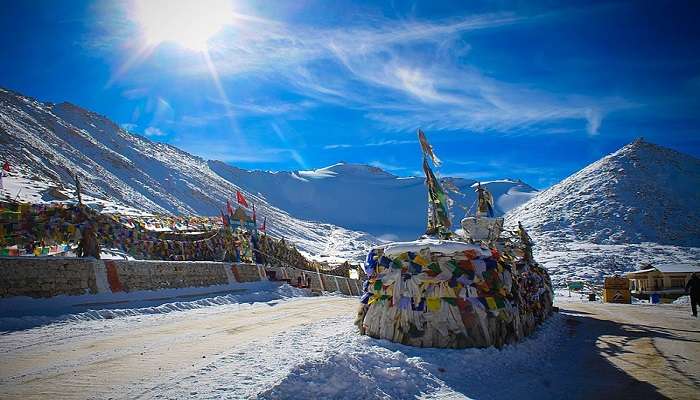
Amidst the scenic beauty of the snow-capped mountains lies the pass that connects the Indus River valley and Shyok River valley, Khardung la Pass in Leh. With an elevation of about 5359 metres, it is the world’s second-highest motorable pass. Watching the mountains with the warmth of cottages is one thing, but diving into the raw beauty of the heart-wrenching Himalayas stays with you forever, and that is what riding on this pass is – Pure, untainted ecstasy. However, Khardung La pass is more than what meets the eye; with the grandeur of the Himalayas, it carries the tales of travellers that travelled on this land to Kasgar as it stood as a major caravan route in ancient times.
Charges – None
Timings – 9:00 am to 5:00 pm
3. Leh Market
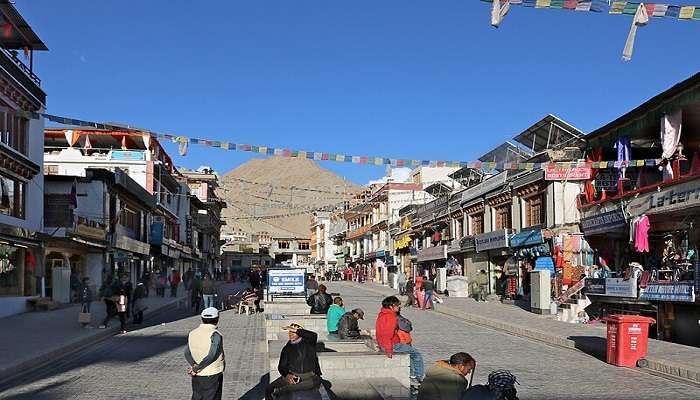
If one wants to explore the place, one must explore its markets, for the busiest markets are prominent in the townspeople’s hearts. From local food to local clothing and accessories, markets resonate with the soul of the people living in it. Therefore, to explore the enchanting legacy of Leh, one must visit its thriving markets. And the market of Leh is just not an ordinary market, it dates back to the rule of the lion king Singe Namgyal of the 15th century and is thriving till date.
Charges – None
Timings – Open All Day
Related Post: Tso Kar Lake
Best Time To Visit
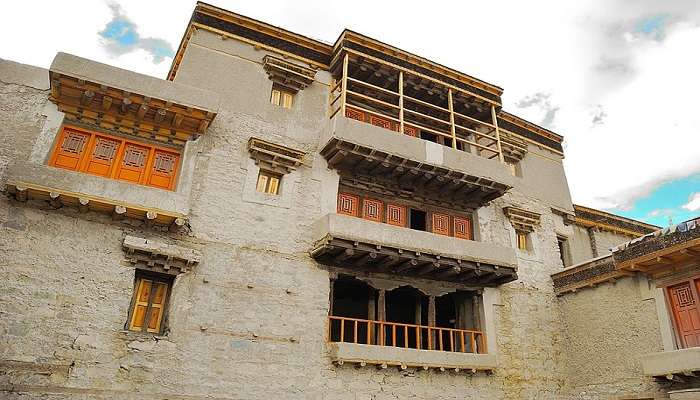
The Himalayas are sure to lure one into its magic, with clear skies topping the glory of the vast ranges. However, to have the best of your trip, you must choose the ideal time to enjoy the richness of Leh Royal Palace. The best time to experience this is from April to September when the sky is clear and the weather is pleasant.
You May Also Like To Read: Camping In Leh
If there is heaven on earth, it ought to be in the Himalayas. And visiting Leh Royal Palace, with the magnificent ranges of the Himalayas as a backdrop, is an enchanting fairytale with the richness of culture, vibrancy, and taste. Enjoy the historic serenity of Leh Royal Palace beneath the snow-capped heavens by booking your trip to Ladakh.
For our editorial codes of conduct and copyright disclaimer, please click here.
Cover Image Credit : Advrider6510 for Wikimedia Commons
Frequently Asked Questions About Leh Royal Palace
What is unique about Leh Royal Palace?
The museum of Leh Royal Palace contains artefacts that date back to 450 years, making it a reservoir of Buddhist history. Breathtaking views surround the palace. There is so much natural abundance that can be enjoyed from the Palace.
Who were the royal family of Ladakh?
The Namgyal dynasty were the royal family of Ladakh. They were also given the title Gyalpo of Ladakh. The Leh Palace was built by Sengge Namgyal, who ruled Ladakh from 1616 to 1642, as a royal residence.
What is Leh known for?
Leh is the capital city of Ladakh, known for its high-altitude, scenic beauty and ancient Buddhist monasteries in the backdrop of the grand Himalayas. Leh attracts nature lovers, Buddhism followers and adventurists from all over the world.
Which language is spoken in Ladakh?
Ladakhi, Balti, Tibetan and Urdu are the official languages of Ladakh. Though at some places you may find people who speak Hindi and English.
What is the main festival in Ladakh?
Though there are many festivals celebrated in Ladakh, Losar is the main festival celebrated in Ladakh. It is the celebration of the Tibetan New Year, held in the 11th month of the Tibetan calendar, typically in December or January.
People Also Read:
Padmanabhapuram Palace Jodha Bais Palace Buckingham Palace

Unveil the hidden treasures of the globe and turn every travel dream into reality. As a Content Writer, I am passionate enough to craft stories from ancient wonders to modern marvels. My words paint the picture-perfect itinerary for unforgettable experiences. Let my words be your trusted guide to immerse in the diverse culture and discover the beauty of the unknown.











